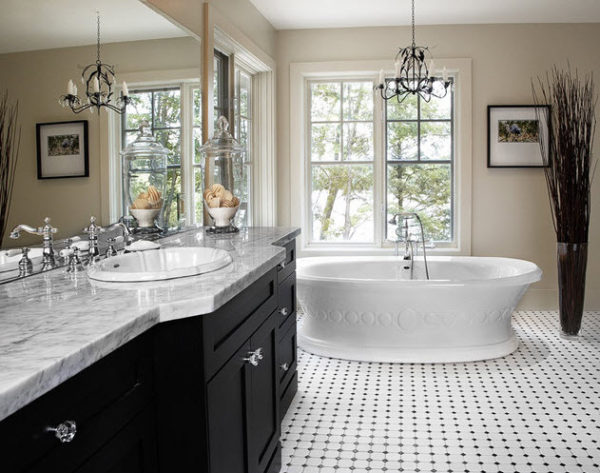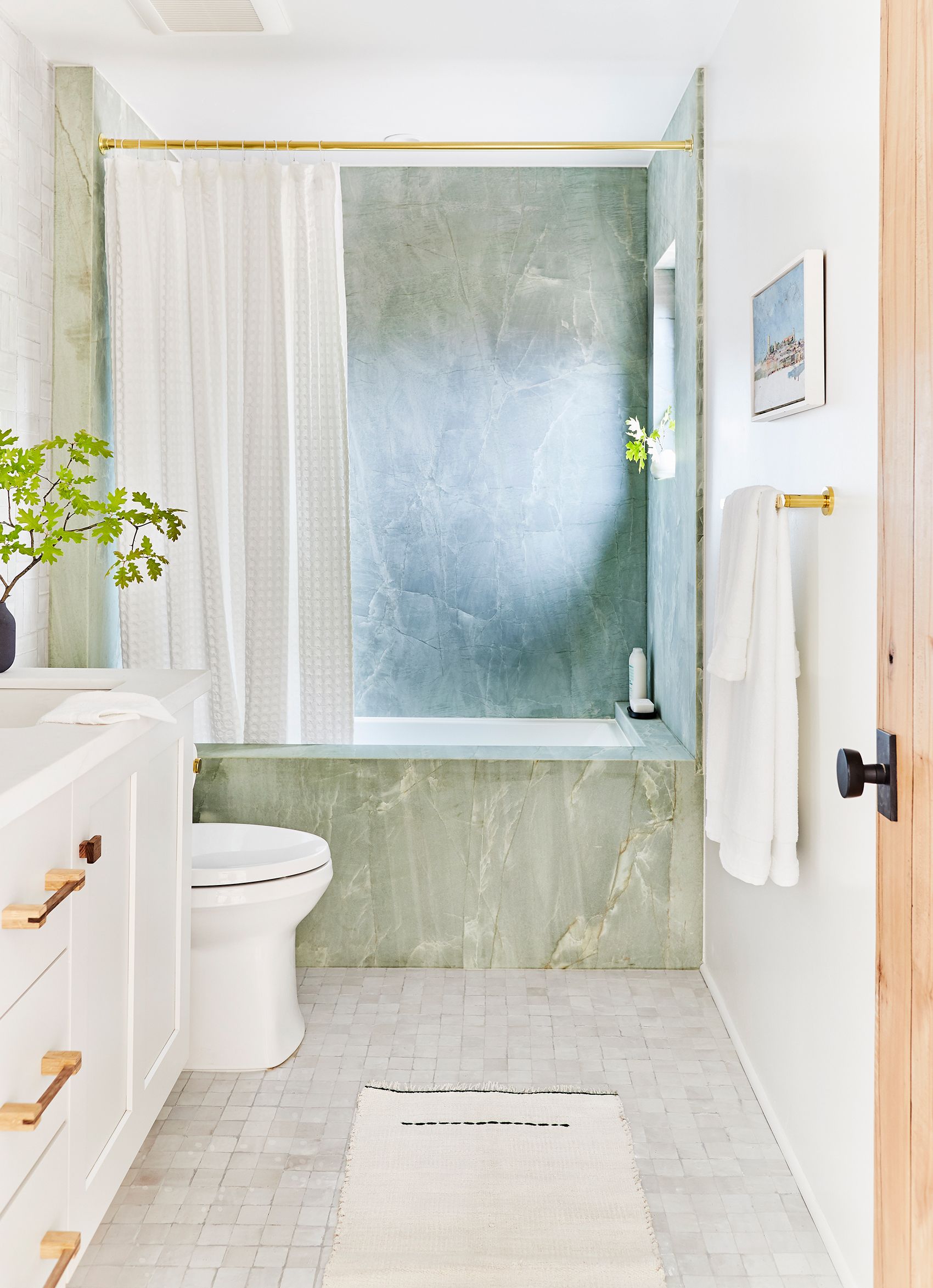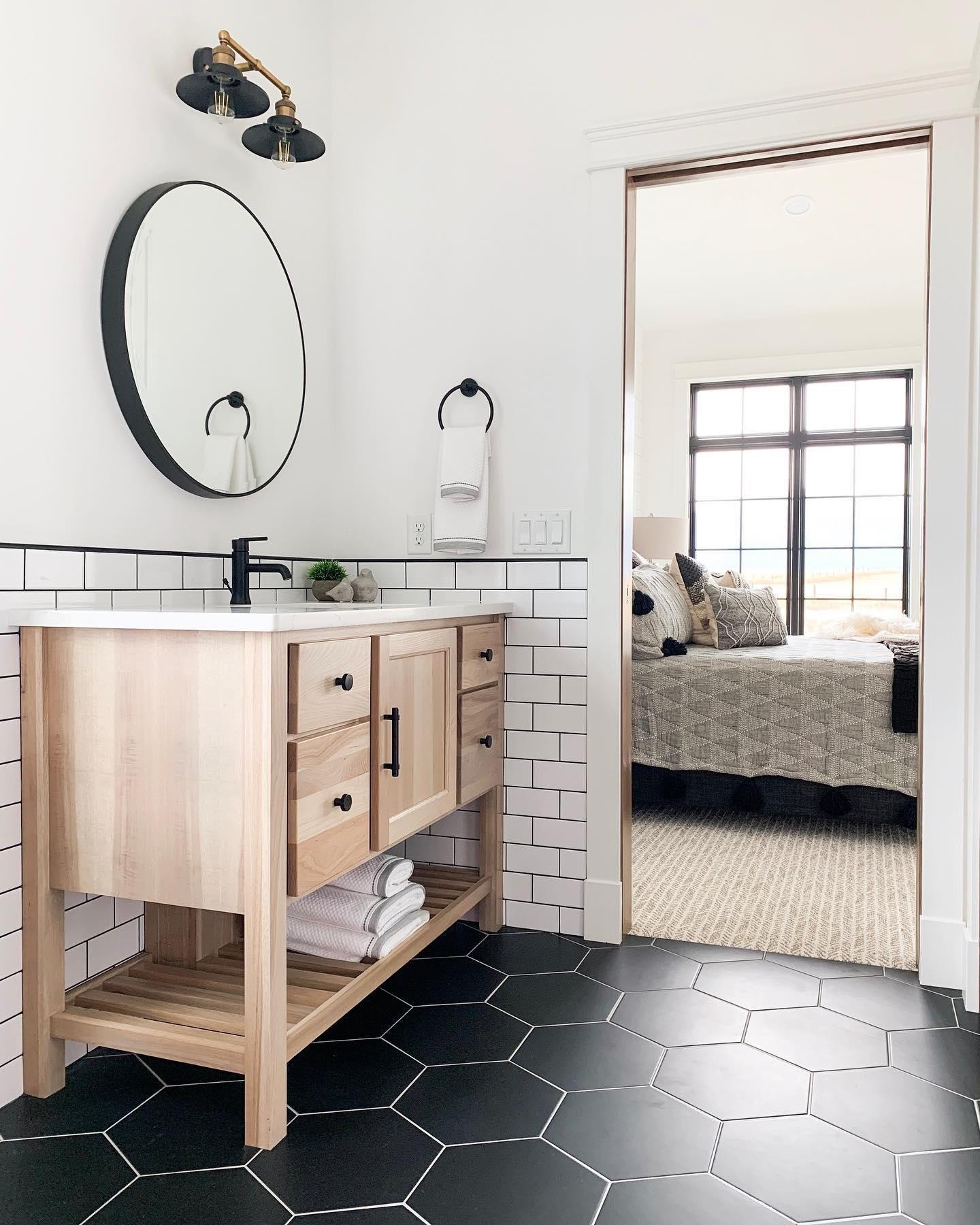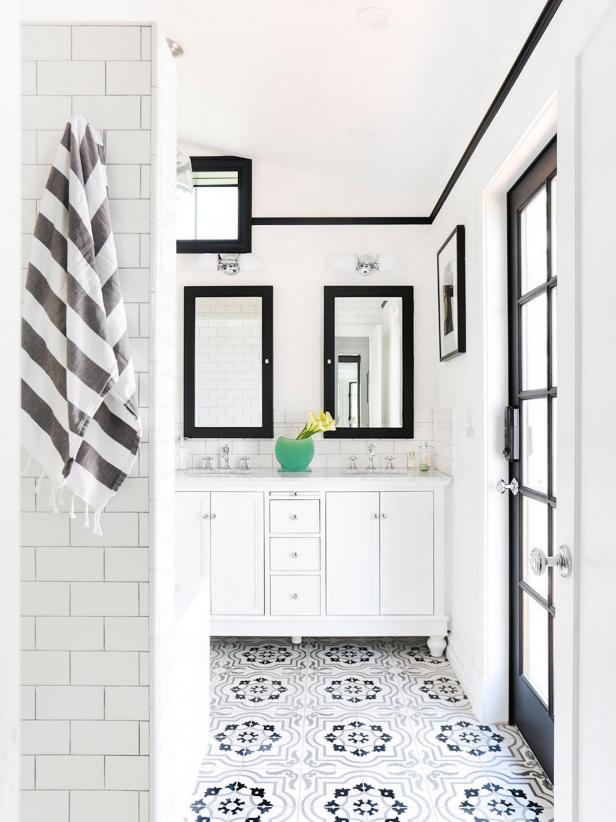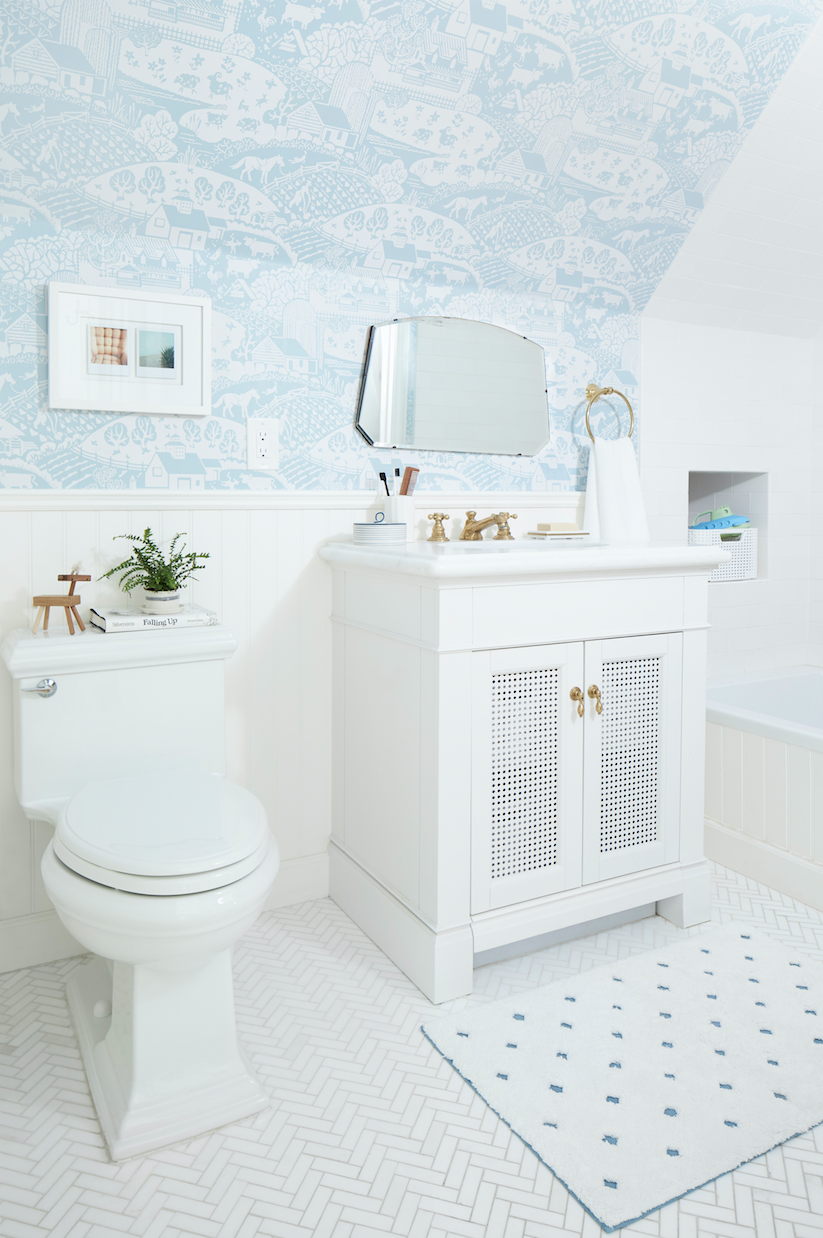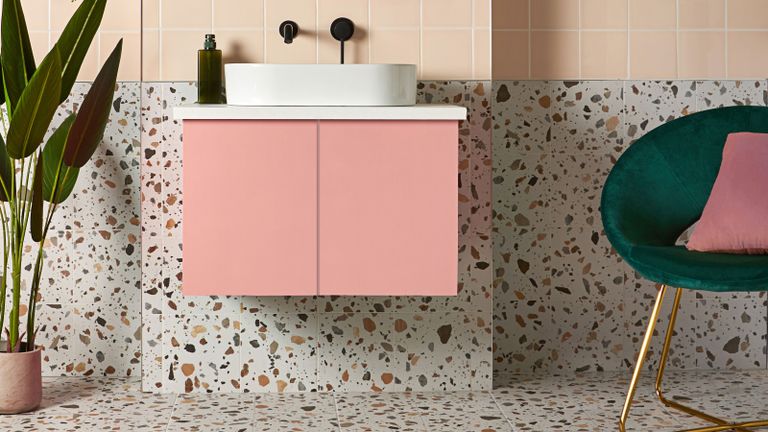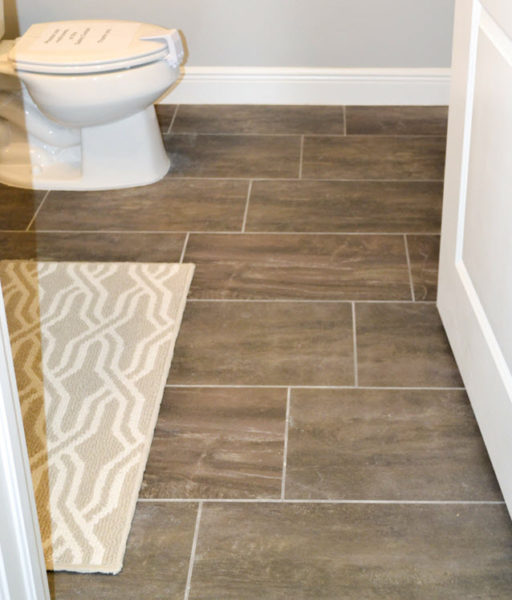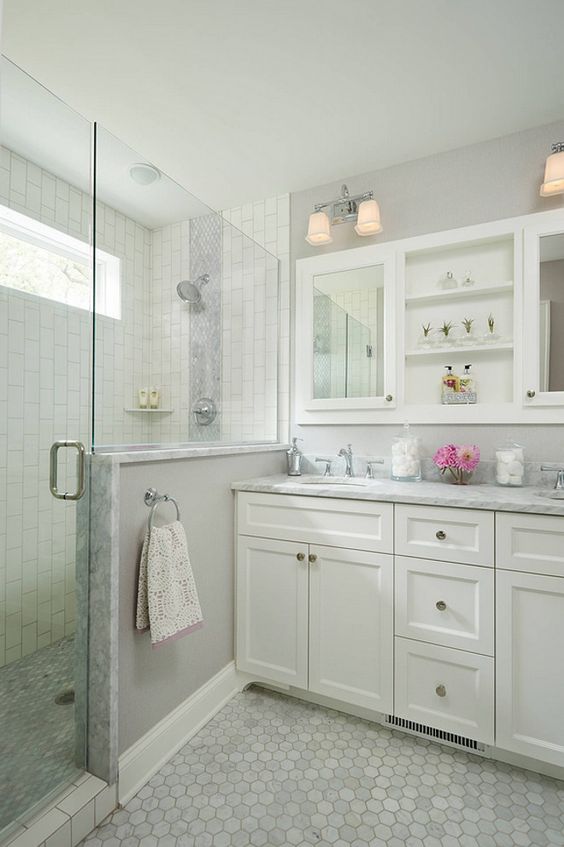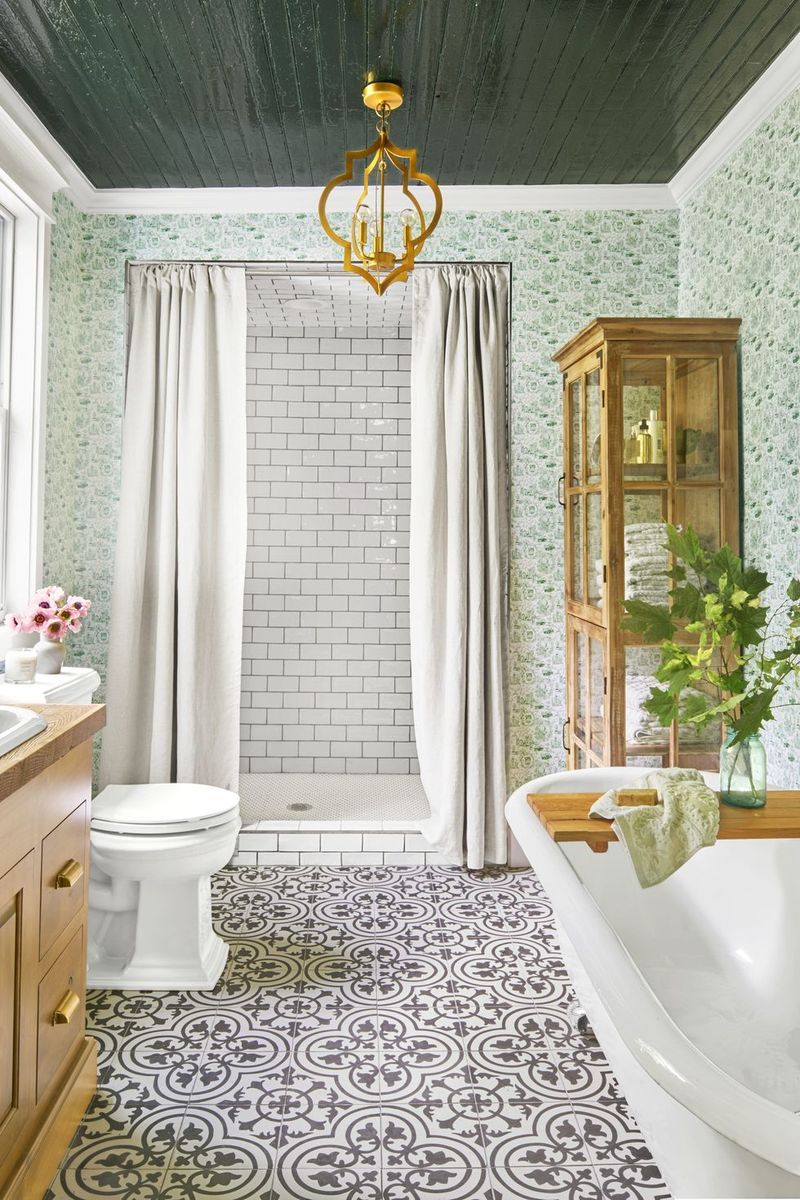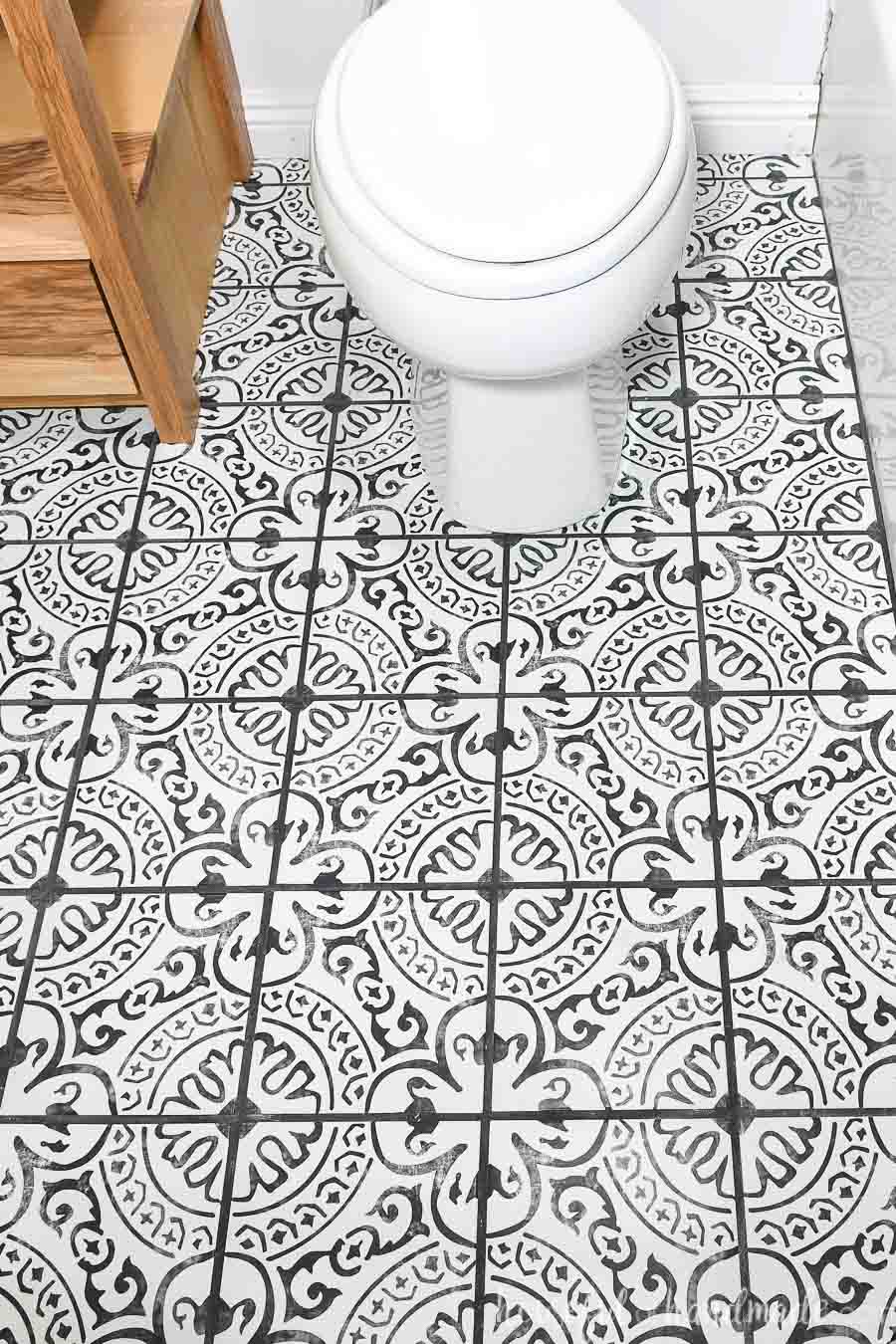Choosing the Right Tile Size for a Small Bathroom
Choosing the right tile size is crucial when it comes to designing a small bathroom. The size of your tiles can significantly impact how spacious or cramped your bathroom feels. Surprisingly, both large and small tiles can work in a compact space depending on how they are used. Let’s explore the factors that go into selecting the ideal tile size for a small bathroom.
- Large Tiles Create the Illusion of Space
Believe it or not, using large tiles in a small bathroom can make the space appear bigger. With fewer grout lines, the floor looks less busy, giving an open and seamless appearance. Large tiles create a continuous surface, which draws the eye across the room rather than breaking it up into smaller segments. - Small Tiles Offer Flexibility in Tight Spaces
Small tiles are perfect for covering awkward or irregular areas, such as around toilets or showers. They allow you to work around tight corners and fixtures without needing excessive cutting. Plus, small mosaic tiles can add charm and texture, giving the bathroom a more intimate and decorative feel. - Rectangular Tiles Help Elongate the Room
Opting for rectangular tiles, like subway or plank tiles, can stretch the visual length of your bathroom. When installed horizontally, they make the room feel wider, while vertically arranged tiles create height, making the bathroom feel taller. This trick is particularly useful for bathrooms with low ceilings or narrow floor plans. - Consider Tile Thickness for Floor Stability
Besides tile size, you also want to pay attention to the thickness of your floor tiles. Thicker tiles are more durable and offer better stability, especially in high-traffic areas like bathrooms. Thin tiles may be more susceptible to cracks, so balance the aesthetics of tile size with the practicality of durability. - Choosing the Right Size for Shower Floors
Smaller tiles tend to be more suitable for shower floors because they provide better traction and allow for proper drainage. Mosaic tiles, for example, are a great choice for shower floors since the smaller grout lines offer slip resistance and help conform to the slope needed for water runoff. - Consult a Professional for Tile Sizing Advice
When in doubt, it’s always helpful to consult a professional. An interior designer or tile installer can provide personalized advice based on your bathroom’s layout and your personal style preferences. They can help you select tile sizes that maximize both form and function in your small bathroom.

Tile Patterns That Maximize Space in Small Bathrooms
When working with a small bathroom, the right tile pattern can be just as important as the tile size. Certain patterns can give the illusion of more space, making your bathroom feel larger and more open. Let’s dive into some tile patterns that are known to maximize space in small bathrooms.
Diagonal Tile Patterns Add Depth
Installing tiles diagonally is one of the best ways to trick the eye into seeing a larger floor space. A diagonal layout creates a sense of movement and depth, leading the eye across the floor rather than drawing attention to the compact dimensions of the room.
Herringbone Patterns for a Dynamic Look
The herringbone pattern is a popular choice for small bathrooms because of its ability to make the room look more dynamic. The interlocking V-shaped tiles create an energetic, flowing design that distracts from the bathroom’s small size. This pattern works particularly well with narrow rectangular tiles.
Brick-Lay or Staggered Pattern for Width
A brick-lay, or staggered pattern, uses rectangular tiles offset from one another to create a sense of width. This layout works well in bathrooms that are long and narrow, as it visually stretches the floor, making the space seem wider than it is.
Chevron Pattern for Added Elegance
Similar to herringbone, the chevron pattern involves arranging tiles in a zig-zag fashion. However, unlike herringbone, chevron tiles are cut at an angle to form continuous lines. This pattern is excellent for adding elegance and sophistication to a small bathroom while still maintaining a spacious feel.
Running Bond Pattern for Simplicity
The running bond or linear layout is one of the simplest tile patterns. It consists of tiles laid in straight rows, typically with smaller rectangular tiles. This pattern is effective in small bathrooms as it doesn’t overwhelm the space and maintains a clean, minimalist aesthetic.
Basketweave Pattern for a Classic Touch
The basketweave pattern involves arranging square tiles in pairs to mimic the appearance of woven fabric. This traditional pattern adds texture and visual interest without crowding the room. It’s a great option for small bathrooms that need a touch of charm and elegance.
Best Tile Materials for Durability and Style
When it comes to choosing the best tile material for a small bathroom, you need to strike the right balance between durability and aesthetics. The bathroom floor is constantly exposed to water, humidity, and frequent foot traffic, so it’s important to select a material that can withstand these conditions while still looking stylish. Here are some of the best tile materials to consider for your small bathroom.
Ceramic Tiles for Affordability and Variety
Ceramic tiles are one of the most popular choices for bathroom floors. They are affordable, come in a wide range of styles, and are easy to clean. Ceramic tiles are also water-resistant, which is essential in a bathroom setting. Plus, their versatility makes them a great option for achieving various design looks without breaking the bank.
Porcelain Tiles for High Durability
Porcelain tiles are a step up from ceramic in terms of durability. They are denser and more water-resistant, making them ideal for high-moisture areas like bathrooms. Porcelain also offers a wide range of colors and patterns, including tiles that mimic the look of natural stone, wood, or even concrete.
Natural Stone Tiles for Luxury Appeal
Natural stone tiles, such as marble, travertine, and slate, bring a sense of luxury and timelessness to any bathroom. These tiles are incredibly durable and can last for decades if properly maintained. However, they can be more expensive and require more upkeep to prevent staining and wear over time.
Vinyl Tiles for Budget-Friendly Waterproofing
Vinyl tiles have come a long way in terms of design and quality. Modern vinyl tiles can replicate the look of stone or wood at a fraction of the cost. They are also completely waterproof and soft underfoot, making them a practical choice for small bathrooms. Their easy installation process is another bonus for DIY enthusiasts.
Glass Tiles for a Reflective, Modern Look
Glass tiles can add a sleek, modern aesthetic to small bathrooms. Because of their reflective properties, glass tiles can make a small bathroom feel brighter and more open. They are usually used in combination with other materials for accent walls or shower areas rather than as a flooring option due to their smooth, slippery surface.
Cement Tiles for Bold Patterns
If you want to make a statement in your small bathroom, cement tiles are a fantastic choice. They offer bold, intricate patterns and a handmade feel that can add character and personality to the space. Cement tiles are highly durable but require sealing to prevent water absorption and staining.
Using Light Colors to Create a Spacious Feel
Choosing the right color palette can make a world of difference in a small bathroom. Light-colored tiles are a favorite trick among interior designers because they can brighten up a room and make it feel larger. Let’s explore how light-colored tiles can transform your small bathroom.
White Tiles for a Classic, Open Look
White tiles are a classic choice for small bathrooms. They reflect light, which helps open up the space and make it feel more airy. Whether you opt for sleek, glossy white tiles or textured matte ones, the effect is always one of brightness and freshness.
Soft Neutrals for a Subtle, Inviting Space
Neutral tones like beige, soft gray, and pale taupe are excellent alternatives to white. These hues still keep the space light and open but add a touch of warmth and coziness. Neutrals are also easy to pair with various accent colors, allowing you to customize your bathroom’s look without overwhelming the space.
Pale Blues and Greens for a Calming Effect
If you prefer a pop of color in your small bathroom, consider soft pastel shades like light blue or green. These colors evoke a sense of calm and relaxation, making your bathroom feel like a soothing oasis. Lighter tones of these colors also have the same space-enhancing effect as white and neutral tiles.
Ivory and Cream for a Touch of Elegance
Ivory and cream-colored tiles add a hint of luxury to small bathrooms without making the space feel heavy. These softer shades create a more sophisticated look while still reflecting light and giving the room an open, airy vibe. Pairing ivory tiles with metallic accents, like gold or brass, can elevate the elegance further.
Mixing Light and Dark for Contrast
For those who love contrast, mixing light-colored tiles with darker accents can create visual interest without making the space feel cramped. You might use light tiles for the majority of the floor, adding darker tiles as a border or feature to give depth and definition without overwhelming the space.
Reflective Surfaces to Maximize Light
Glossy, light-colored tiles or tiles with a subtle sheen can enhance the sense of space by reflecting light around the room. The more light that bounces off the surfaces, the bigger and brighter the room will feel. This is especially effective in bathrooms with minimal natural light.
Textured Tiles for Safety and Aesthetics
Small bathroom floors are often prone to becoming slippery, especially in a humid environment. Textured tiles not only add an extra layer of safety but also enhance the visual appeal of your bathroom. Here’s why you should consider incorporating textured tiles in your design.
Slip-Resistant Tiles for Safety
One of the main reasons to choose textured tiles is for their slip-resistant properties. Textured surfaces offer better grip, reducing the chances of slipping, which is particularly important in a bathroom setting where water and moisture are prevalent.
Natural Stone Textures for a Rustic Appeal
Natural stone tiles, like slate or travertine, come with built-in textures that add character to your bathroom. These tiles have a rough, earthy feel, which not only provides traction but also brings a rustic, spa-like aesthetic to the space. The irregular surface of natural stone also hides dirt and imperfections better than smooth tiles.
Mosaic Tiles for Enhanced Grip
Mosaic tiles are small and usually come with numerous grout lines, which naturally offer more grip underfoot. These tiles are an excellent choice for shower floors and areas prone to getting wet, as they provide the necessary traction to prevent slipping while adding intricate design details.
Wood-Look Textured Tiles for Warmth
If you love the look of wood but need the durability of tile, consider textured wood-look tiles. These tiles mimic the grain and texture of real wood while offering the water resistance and longevity of ceramic or porcelain. The added texture not only looks realistic but also provides a safer, slip-resistant surface.
Raised Patterns for Visual Interest
Tiles with raised patterns or embossing add both texture and visual interest. Whether it’s a subtle geometric pattern or a more intricate design, raised tiles can break up the monotony of a smooth floor while also enhancing the overall aesthetic of your bathroom.
Matte-Finish Tiles for Minimalistic Safety
Matte-finish tiles are another excellent option for small bathrooms. While they may not have an obvious texture, their non-reflective surface offers better traction compared to glossy tiles. Matte tiles are perfect if you’re looking for a modern, minimalist aesthetic without compromising on safety.
Grout Color Options to Enhance Small Bathroom Tiles
Grout might seem like a minor detail, but in a small bathroom, it plays a crucial role in enhancing the overall design. The color of your grout can either blend seamlessly with your tiles or create a bold contrast that adds character to the space. Here’s how to choose the right grout color for your small bathroom.
Matching Grout for a Seamless Look
If you want your tile installation to look sleek and uninterrupted, matching your grout color to your tile color is the way to go. This approach works particularly well with large-format tiles, as it creates a continuous, flowing surface that makes the bathroom feel more spacious.
Contrasting Grout for Definition
On the other hand, if you’re looking to add visual interest and definition to your tiles, consider using a contrasting grout color. For example, pairing white tiles with dark grout creates a bold, graphic look that makes each tile stand out. This technique works well with subway or rectangular tiles and adds a modern, industrial vibe.
Neutral Grout for a Balanced Aesthetic
If you prefer a balanced look, neutral grout colors like light gray or beige are a safe bet. Neutral grout complements most tile colors and finishes without overwhelming the design. It’s subtle enough to blend in but still provides enough contrast to define the tiles’ edges.
Colored Grout for a Pop of Personality
For those who love experimenting with color, using colored grout is a fun way to add personality to your bathroom. Whether it’s a soft pastel hue or a bold, vibrant shade, colored grout can bring an unexpected twist to your tile installation. This option is great for adding a playful or artistic touch to a small bathroom.
Epoxy Grout for Stain Resistance
When it comes to durability, epoxy grout is a top choice, especially in small bathrooms where grout lines are more noticeable. Epoxy grout is highly resistant to stains, water, and mildew, making it a practical choice for bathroom floors. It also comes in various colors, allowing you to combine both aesthetics and functionality.
Sealing Grout for Long-Term Maintenance
Regardless of the grout color you choose, sealing it is essential for long-term maintenance. Sealed grout is less likely to absorb moisture and stains, which keeps your bathroom looking fresh and clean for longer. Make sure to use a high-quality sealer and reapply it periodically to maintain the grout’s appearance and durability.
Tips for Maintaining Small Bathroom Floor Tiles
Once you’ve selected and installed the perfect tiles in your small bathroom, maintaining them is key to keeping them looking fresh and new for years to come. Small bathrooms can experience heavy use, and proper care ensures your tiles stay in excellent condition. Here are some essential tips for maintaining small bathroom floor tiles.
Regular Cleaning to Prevent Buildup
One of the most effective ways to maintain your bathroom tiles is through regular cleaning. Tiles can accumulate soap scum, dirt, and grime over time, especially in high-moisture areas like bathrooms. Use a mild cleaner designed for tile and grout to keep the surfaces free of buildup and prevent discoloration.
Address Grout Stains Immediately
Grout is often more prone to staining than the tiles themselves, especially in lighter colors. To avoid stubborn stains, clean grout lines regularly and address any stains immediately with a specialized grout cleaner. A soft brush can help scrub away grime without damaging the grout.
Avoid Harsh Chemicals
While it’s tempting to reach for heavy-duty cleaners, it’s best to avoid harsh chemicals on your bathroom tiles. Acidic or abrasive cleaners can wear down the tile’s protective finish over time, leaving them vulnerable to damage. Instead, stick to pH-neutral or tile-specific cleaning solutions to preserve their beauty.
Reseal Natural Stone Tiles Periodically
If you have natural stone tiles, it’s important to reseal them periodically to maintain their water resistance and protect against stains. Stone tiles like marble and travertine are porous, so sealing them creates a protective barrier that prevents water and moisture from seeping into the material.
Use Mats to Protect High-Traffic Areas
Placing bath mats or rugs in high-traffic areas, such as in front of the sink or shower, can help protect your tiles from wear and tear. Mats also absorb excess water, reducing the risk of slippery floors and extending the life of your tiles and grout.
Inspect and Repair Damaged Tiles
Finally, regularly inspect your bathroom tiles for any signs of damage, such as cracks or chips. Promptly repairing or replacing damaged tiles can prevent further issues and ensure the overall integrity of your bathroom floor. It’s also a good idea to check the grout for cracks or gaps and reapply grout as needed.
Small bathroom tile ideas that make a splash in a tiny space
Big Tile or Little Tile? How to Design for Small Bathrooms
Cool Bathroom Floor Tiles Ideas You Should Try
Popular Bathroom Tile Ideas – Bathroom Wall and Floor Tiles
How To Update Your Bathroom Floor Tiles
Bathroom Tile Ideas
Laying Floor Tiles in a Small Bathroom – Houseful of Handmade
Related Posts:
